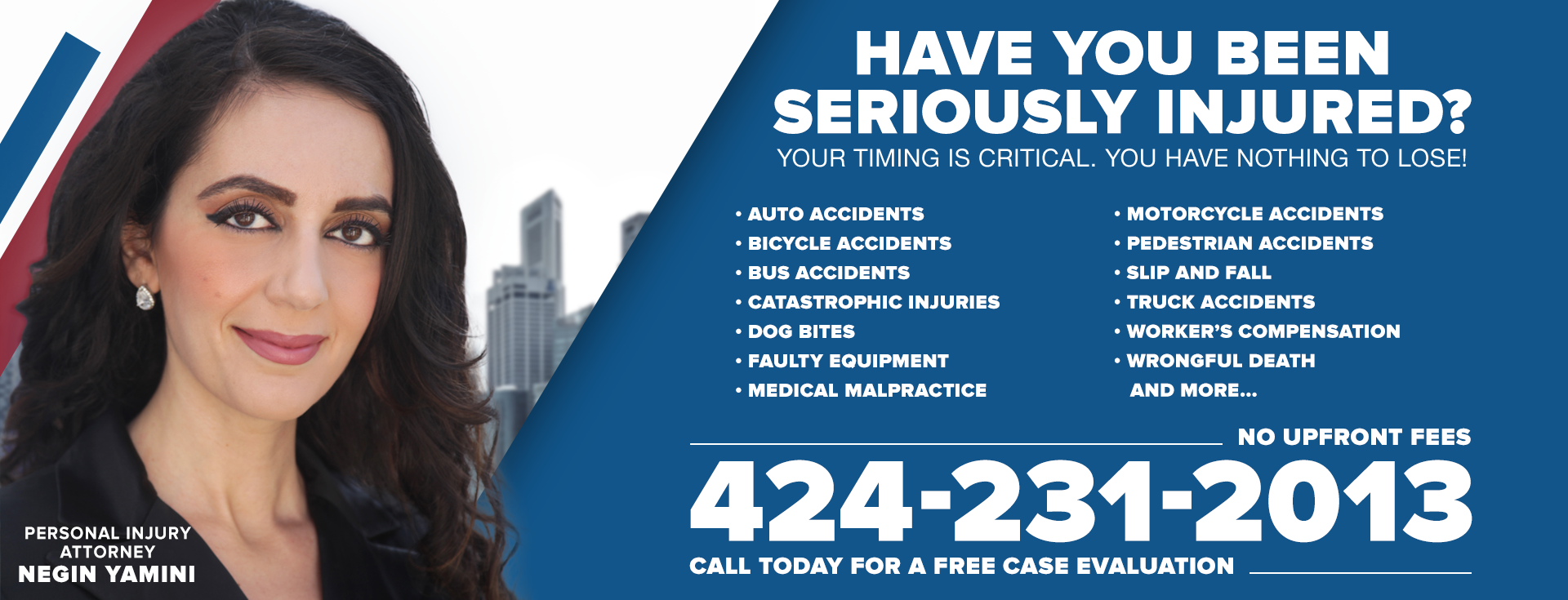Burn injuries can be severe. Moreover, they leave long-lasting scars on the victim’s skin and come with high-cost medical bills. Injury-related problems can have a significant impact on your life. A burn claim arises when you suffer a tissue injury from heat, chemicals, electricity, radiation, or friction, primarily due to another’s fault. Knowing your rights will help you recover and secure compensation for your injuries and losses if you have suffered this type of injury.
To seek compensation, you should talk to a qualified personal injury lawyer. California burn injury lawsuits can be complicated. You will want a competent attorney to assist you in recovering compensation for your injuries and holding a negligent party accountable. This guide will help you know how to take action and protect your legal rights as a burn victim.
Common Causes of Burn Injuries
There are many different ways in which burn injuries can occur. However, many lawsuits stem from certain situations, many of which can be avoided. In other words, these situations are usually caused by negligence. Understanding the causes of burn injuries will help you identify potential liability. Some common burn accidents include:
- Structure fires — Some fires can occur because of faulty wiring, defective smoke alarms, flammable building materials, or code violations by the owner or contractor, causing apartment fires that result in thermal burns.
- Vehicle accidents — Crashes involving cars, trucks, or motorcycles can rupture the fuel line or cause an electrical short. This can lead to a fire and severe burns. Driver mistakes like speeding and distraction cause most of these incidents.
- Workplace incidents — Jobs like those in the construction industry pose a risk of burns for workers. Work-related burns can occur from improper safety training or safety equipment when handling chemical burns from dangerous materials, electrical burns from unsafe equipment or wiring, and thermal burns from industrial processes. Employer negligence is often implicated.
- Defective products — An item misdesigned or not appropriately manufactured could cause a burn. Examples include malfunctioning kitchen appliances like stoves and pressure cookers, faulty heating devices, defective power tools, exploding e-cigarette batteries, or flammable clothing leading to defective product burns. Manufacturers and sellers can be held liable.
- Scalding liquids from taps and restaurants — Excessively hot water from your taps due to improperly set water heaters in rental properties, spilling hot beverages in a restaurant or airplane, or an industrial accident involving hot liquid can cause severe scalds.
- Premises liability — Property owners must keep conditions reasonably safe. Injuries from burns on someone else’s property can occur because of unsafe electrical wiring, exposed hot pipes, absent warning signs around hot surfaces, and improperly maintained fire safety systems.
Who Can Be Sued for a Burn Injury?
Determining who is responsible for a burn injury is the first step in making a claim. Liability is not always limited to a single person. Depending on the case, several people could share liability. People you can sue for burn injury include:
- The owners and managers of the property — These include landlords, homeowners, or commercial property managers. They should be liable for burn injuries in the event of unsafe premises. This could involve failing to fix faulty wiring, ensuring proper water heaters' temperature settings, and complying with local fire codes.
- Employers — Employers without safety protocols can be held liable if you suffer a burn while at work as an employee. Usually, workers’ compensation would take care of it. However, if it was an egregious action on the employer’s part, you could also sue them directly. Employers can also be liable for negligent acts employees perform during their jobs due to the doctrine of respondeat superior.
- Sellers or manufacturers — Companies that make, sell, or oversee the sale of a faulty product, like a defective appliance or flammable fabric made into clothes that causes a burn, will face a product liability lawsuit. This is a manufacturer liability lawsuit for a defective product.
- Drivers and vehicle owners — If a driver is negligent and causes an accident that results in a fire, he/she can be liable for burns. This is likely if it is determined to be a driver-fault car accident. The vehicle owner may also be liable under permissive use rules.
- Contractors or maintenance companies — If third parties like electrical, plumbing, or HVAC contractors install or maintain a defective manner and a burn risk is caused, they can be liable for damages for failure to warn.
- Government entities — In some cases, public entities can be liable for dangerous conditions on public property, but some specific procedures and immunities apply.
Developing all potentially liable parties to maximize recovery is essential, as different parties have different insurance policies or assets.
What is Negligence in a California Burn Injury Case?
To secure compensation through a burn injury lawsuit, you must show that someone else’s negligence caused your injuries. Many people assume that negligence is the same as carelessness. Well, not actually. Negligence means more than carelessness. Legal negligence has four elements. These are
- Duty of care — You must prove that the defendant owed you a duty of care. This indicates that they had a legal responsibility to take care of and avoid causing any harm. For example, your landlord owes you a duty to keep the premises safe, as does the product manufacturer and your employer with your workplace.
- Breach of the duty of care — Negligence requires that the defendant breached that duty. This means they did not act like a reasonably careful person or entity would have acted in the same situation. Proving fault for a burn injury often hinges on this element. For instance, imagine a property owner who knows there is faulty wiring but fails to fix it, a company that sells an appliance that overheats, or an employer who fails to have proper protocols to use a chemical safely.
- Causation — You must show that the defendant's fault directly caused your burn injury. You must show that the defendant was legally responsible for your injury. This requires demonstrating:
- Cause-in-fact — The injury would not have happened but for the breach and
- Proximate cause — The injury was a reasonably foreseeable consequence of the violation under California negligence law.
- Damages — You must demonstrate that you suffered real damage, harm, or losses because of the defendant’s negligence. These include medical care expenses for medical care, lost income, and emotional distress.
Establishing these elements of negligence requires careful investigation and evidence. As the injured party, you will be the plaintiff in a personal injury lawsuit against the negligent party. You will be required to prove negligence by a preponderance of the evidence. This means that it is more likely than not that the defendant was negligent.
The Severity of Burns
The severity of a burn injury can significantly influence your recovery, the medical treatment required, and the claim's value. Burns can be classified in degrees based on the depth and extent of tissue damage, namely:
-
First-Degree Burns
A first-degree burn damages the first layer of the skin, the epidermis. The symptoms of a first-degree burn include redness and minor pain. Usually, the burn heals without scarring. A lawsuit for a first-degree burn may not be common unless it covers many areas or is complicated, although the injury is painful.
-
Second-Degree Burns
A second-degree burn affects the second layer of skin, the dermis. These burns tend to hurt, blister easily, and look red or blotchy. They carry a risk of infection and could result in scarring. Second-degree burns are painful, and they may result in compensation. However, only if you suffer permanent damage and the burns leave lasting scars.
-
Third-Degree Burns
Third-degree burns destroy the entire dermis and epidermis and destroy some underlying tissue. The site of the burn could appear white, black, or charred, with no immediate pain due to nerve damage.
Severe burns that need medical treatment requiring skin grafts have a high risk of infection, always result in a large scar, and may lose function. Compensation settlements for third-degree burn cases tend to be higher due to the extensive medical treatment involved, permanent disfigurement caused, and the impact on the victim’s life.
-
Fourth-Degree Burns
A fourth-degree burn is an injury when fire, heat, or electricity injures the skin or burns deeper tissues like muscles, bones, or tendons. Limbs that require amputation, extensive reconstruction, and permanent disability or death often result in significant awards in damages.
From a legal standpoint, it is crucial to understand how burns are classified to properly value the amount of medical treatment and time needed in healing, pain and suffering, permanent disfigurement, and the amount of damages in a lawsuit.
Different Types Of Compensation Can Be Claimed As Damages In A Burn Accident
As a burn injury victim, you can recover damages for your loss, pain, and suffering due to the other party’s negligence. Most of the damages fall mainly under two categories, which are economic and non-economic. However, they may also include punitive damages in some specific situations.
-
Economic Damages
You can sue for economic damages, which are special damages. These are objective, calculable financial losses directly resulting from the burn injury. They include.
- Medical costs — These are costs incurred for past, present, and reasonable future medical care. This is often the most significant component of damages in burn lawsuits.
- Lost wages and earning capacity — This compensation covers income lost when you cannot work. If you can no longer return to your job or earn the same amount due to disability or disfigurement from the burn, you can claim damages for a loss of earning capacity.
- Property damage — You can claim property damage to pay for the repairs or replace your personal belongings damaged or destroyed in the incident.
- Rehabilitation costs — An award in damages under this category caters to costs to rehabilitate or change your home and automobile so you can live with your disability.
- Other out-of-pocket expenses — All the other expenses you incurred, like traveling costs to medical appointments or help with household chores.
-
Non-Economic Damages
Non-economic or general damages are all subjective damages that cannot be quantified monetarily but affect the quality of life markedly. They include.
- Pain and suffering
- Emotional distress
- Loss of enjoyment of life
- Disfigurement and scarring
- Loss of consortium
-
Punitive Damages
Punitive damages can be awarded when a defendant’s actions show malice, oppression, or fraud, which is a grossly negligent disregard for the safety of others. These damages are meant to punish and deter the wrongdoer rather than to compensate the victim for the harm suffered.
California's Statute of Limitations for Filling Lawsuits for Burn Injuries
If you want to bring a lawsuit for your burn injuries, you must be aware of the strict legal deadlines, known as the statute of limitations. If you do not file your case in this period, the court will likely dismiss your case, and you will be barred from seeking compensation through the legal system.
Personal injury cases like burn injury due to negligence have a statute of limitations of two years from the date of the injury. The California Code of Civil Procedure, Section 335.1, mainly governs this deadline.
Usually, the "clock" starts ticking from the day of the incident that caused the burn. However, there are some crucial exceptions, namely:
- The discovery rule — This rule states that if you fail to realize your burn injury was caused by someone’s negligence immediately, the “clock” can start running from the date you discover it. Alternatively, the clock starts when you reasonably should have discovered the negligence.
- Minors — If the burn victim is a minor or under 18, the statute of limitations generally is tolled or paused until they reach the age of 18.
- Claims against government entities — Any lawsuit against a public entity like the city, county, or state has a much shorter deadline and specific pre-lawsuit claim filing requirements, often within six months.
Because of all the complexities and exceptions to the statute of limitations, speaking with a personal injury laywer immediately after a burn injury is imperative to ensure you file your lawsuit within the deadline.
California's Comparative Negligence Rule
Sometimes, your actions could have contributed to the accident and caused your burns. Generally, the answer is yes if you are concerned about whether you can sue if you were partly at fault in California. This is because there are comparative negligence California rules in place.
California follows a pure comparative fault system. As a result, if you were partially to blame for the accident, you still can recover damages. The jury or court assigns percentages of fault to each party involved instead. Your assigned percentage of fault reduces the damages you receive.
For example, if your total damages from a car accident are $100,000, but you are found to be 30% at fault because you were not paying attention in an area with a hazard, your recovery will be reduced by 30%. Therefore, you will receive $70,000.
Wrongful Death Claims After a Fatal Burn Injury
A severe burn injury can cause death in unfortunate situations. If this happens due to another party’s neglect or wrongful act, certain surviving family members could have the right to file a wrongful death lawsuit for a burn injury. A claim of this type differs from a personal injury claim the victim could have made if they survived.
Code of Civil Procedure 377.60 specifies that a wrongful death lawsuit can typically be filed by the surviving spouse or domestic partner, children, and possibly others who were financially dependent on the deceased. These possible additional parties include parents and stepchildren, depending on the circumstances.
A wrongful death claim aims to provide compensation for the bereavement and losses that the eligible survivors have personally experienced due to the death. Recoverable damages in a wrongful death case often include:
- Funeral and burial expenses
- What the deceased would have earned, minus personal spending
- Loss of household services that the deceased would have executed
- Farewell to love and friendship, as well as comfort, assistance, security, and morals
The deadline for filing a wrongful death claim is generally two years from the date of death, just like personal injury cases. As a result, it is crucial to seek legal guidance as soon as possible. To file a fatal burn accident claim, you must go through a particular legal process that a lawyer with experience best handles.
Find a Personal Injury Attorney Near Me
A grave burn injury leaves a person suffering a lot physically and emotionally through negligence. As this guide has outlined, the law allows you to recover compensation for your injuries. However, as the injured party, it is in your interests to understand how negligence, liability, and damages all come into play. Furthermore, you should file the lawsuit before the statute of limitations bars it.
Usually, to prove your case and recover fair compensation requires investigations and negotiations. If you or someone you love has sustained a severe burn, seek legal assistance for burn injury as soon as possible to protect your rights. Talk to the Los Angeles Personal Injury Attorney. Our dedicated team will review your case and explain how we can help you fight for the justice and compensation you deserve. Contact us at 424-231-2013 for further assistance.
























